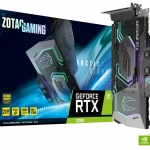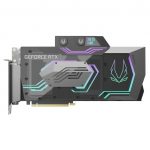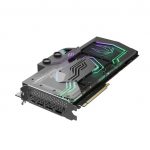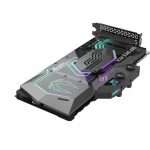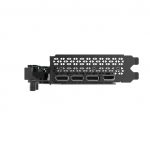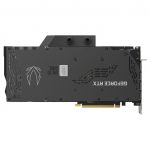Zotac has another RTX 3090 to add to its line-up, this time designed for custom water cooling loops. The RTX 3090 ArcticStorm comes with a pre-installed water block and a 16+4 phase power design, which should help with overclocking.
The Zotac RTX 3090 ArcticStorm's cooling system consists of a nickel-plated copper cold plate in direct contact with the GPU, and an anodised aluminium water block covering the whole graphics card. Moreover, the card also comes with a metal backplate designed to match the card's theme, improving its looks while also helping to cool the card passively.
Featuring a slim 25.9mm profile and a 2-slot design, this graphics card can be easily mounted even in compact ITX systems. The G 1/4″ inlet and outlet ports are standardized for improved compatibility. There are also sealing barbs supporting 10mm inner diameter tubing to prevent leakage.
The 16+4 power phase design allows users to push the card to new heights of performance. The card comes with a Powerboost control chip that increases the GPU stability by automatically adjusting the electrical current and correcting electrical deviations, resulting in less ripple and power variations.
Compatible with the Spectra 2.0 RGB system, the RTX 3090 ArcticStorm comes with multiple ARGB LEDs with various lighting modes. Users can control brightness and switch between lighting modes on individual zones using FireStorm. There is also a 3-pin RGB header that can be connected to a motherboard or RGB hub for synchronisation with other components.
KitGuru says: We don't have pricing information yet, but this is sure to be one of the more expensive RTX 3090s on the market. Are any of you planning on building a custom water-cooled system with an RTX 3090 this year? What do you make of Zotac's ArcticStorm model?
 KitGuru KitGuru.net – Tech News | Hardware News | Hardware Reviews | IOS | Mobile | Gaming | Graphics Cards
KitGuru KitGuru.net – Tech News | Hardware News | Hardware Reviews | IOS | Mobile | Gaming | Graphics Cards


